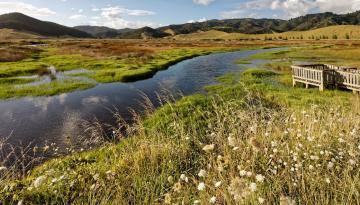
A number of projects working to improve freshwater quality in the Bay of Plenty are set to be scaled up, after an injection of funding on Tuesday.
The Accelerating Bay of Plenty Freshwater Improvement project will focus on four catchment areas in the region. It will fence 174km of private land and plant 450,000 native plants in a bid to protect the region's waterways and enhance native biodiversity.
It will also employ 135 people over the next two years, including 65 full-time workers, according to the Ministry for the Environment.
The catchments covered in the project are the Pongakawa River and tributaries of the Waihī Estuary, the Paraiti and Kaituna, Nukuhou and Rotorua Te Arawa Lakes.
All are currently all experiencing high levels of contaminants from sedimentation and livestock nutrients.
"We are thrilled to get these projects underway, as they will have multiple benefits for our rural community, within these priority catchments," Chris Ingle, Bay of Plenty Regional Council integrated catchments general manager, said on Tuesday.
"Fencing our waterways on a large scale is an important part of the process to manage nutrient levels and improve downstream water quality.
"These projects were selected because they demonstrate immediate job creation, significant environmental outcomes, iwi and community engagement and/or partnership."
Ingle said the bulk of the projects' work will focus on excluding livestock from waterways, wetlands and lakes, creating native planting buffers, and the retiring and planting of erosion-prone land and gullies.
Environment Minister David Parker said the project would receive $3 million in funding from the Jobs for Nature programme.
The money would support the Bay of Plenty Regional Council and around 45 landowners to implement the work.


